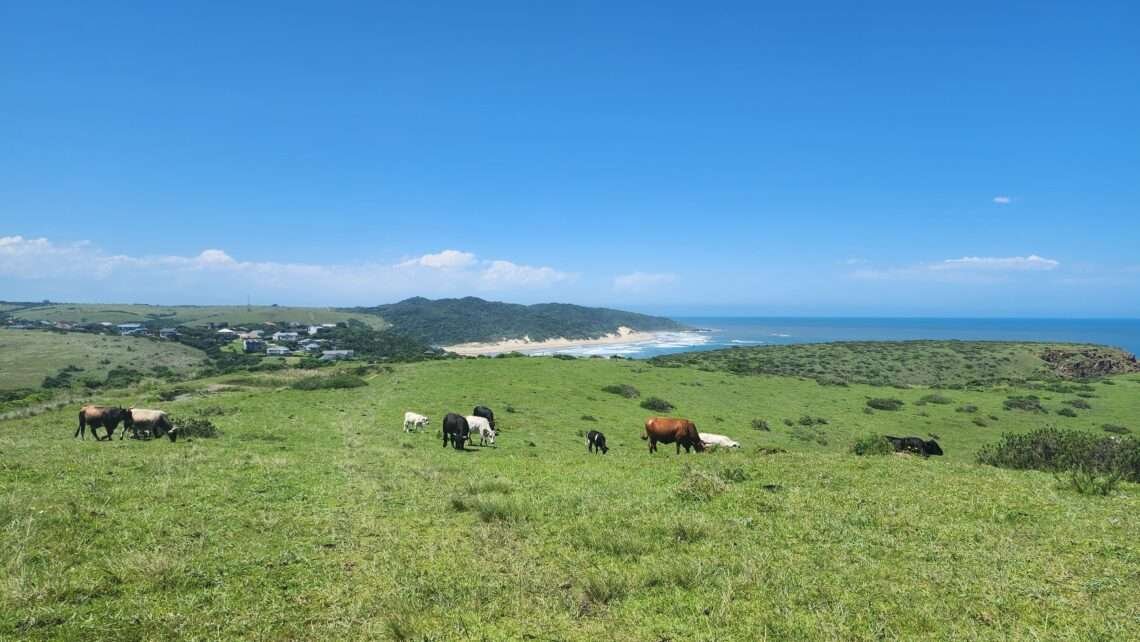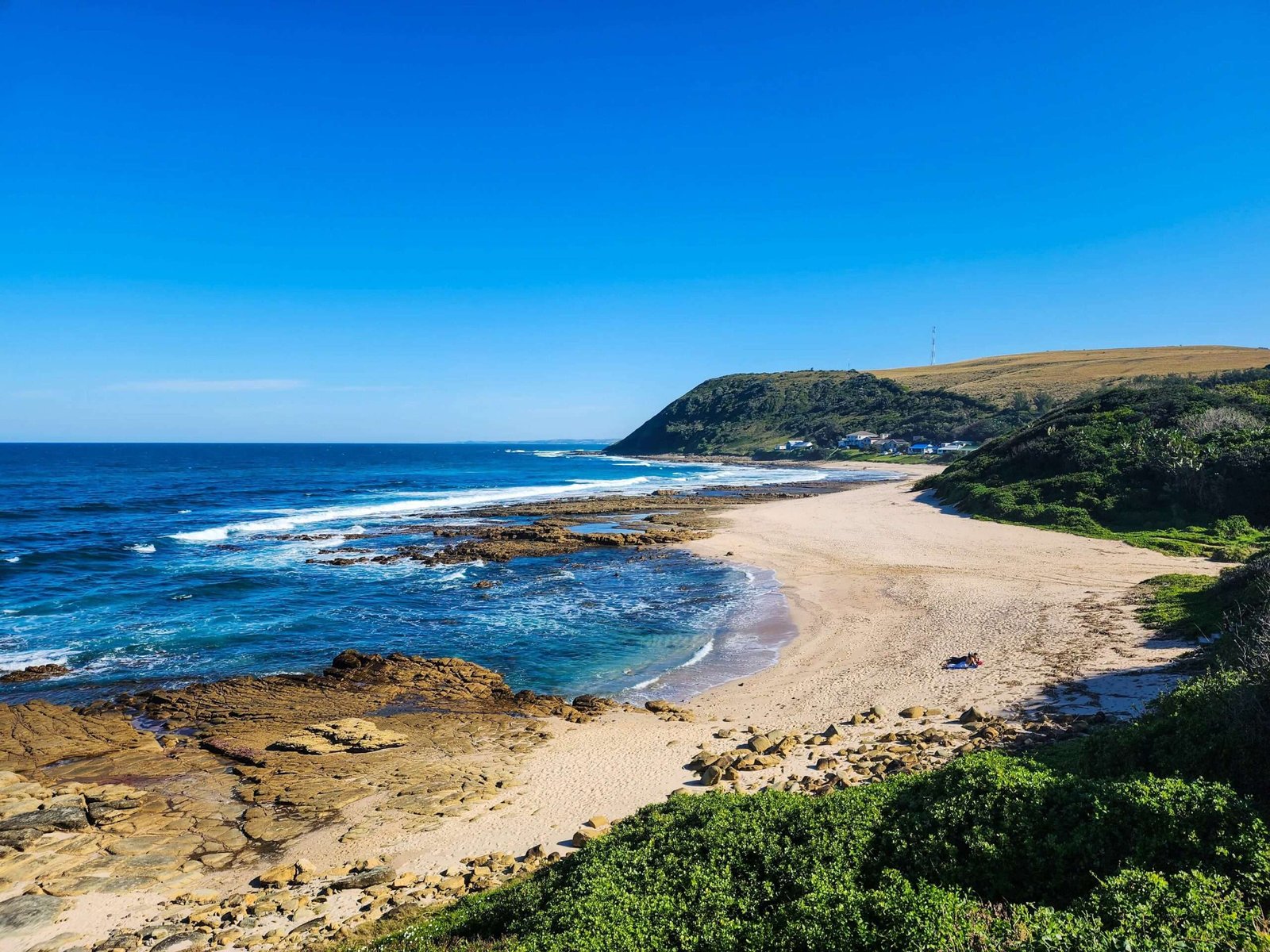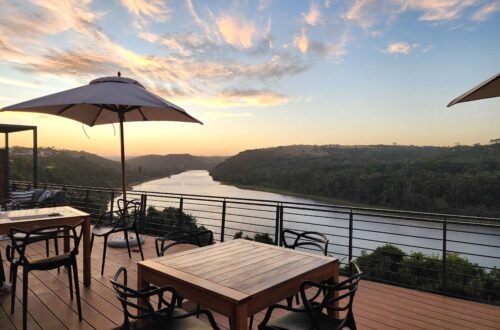
Why the Eastern Cape is South Africa’s Best Kept Secret
South Africa is famous for its diverse landscapes, rich history, and vibrant culture. While cities like Johannesburg and natural wonders like Table Mountain in Cape Town tend to steal the spotlight, there’s a hidden treasure often overshadowed by the tourist crowds – the Eastern Cape. Tucked away in the southeastern corner of the country, the province remains one of South Africa’s best-kept secrets. In this blog post, I’ll delve into the many reasons why the Eastern Cape should secure a spot on your travel bucket list. From its diverse wildlife and pristine beaches to its cultural heritage and warm hospitality, the Eastern Cape offers an enriching and off-the-beaten-path travel experience.
Unspoiled Wilderness and peaceful wildlife retreats

Set in a malaria-free environment, the Eastern Cape offers a quieter and more unspoiled experience compared to South Africa’s most famous wildlife destinations. This makes it the perfect place to escape the crowds and immerse yourself in the serene beauty of nature. Whether you’re hiking through a forest or enjoying a sundowner with a view of the rolling hills, you’ll find a sense of tranquility that’s hard to match.
The Eastern Cape is home to award-winning private game reserves and lodges, along with South Africa’s third-largest National Park, Addo Elephant Park. In fact, Addo is home to over 600 elephants, which is one of the densest elephant populations in Africa. Another impressive site in the Eastern Cape is Camdeboo National Park. Well loved for both its wildlife and stunning Valley of Desolation, the park is a must-visit in the province.
In addition to these incredible destinations, there are also lesser-explored reserves that hold a special place in the hearts of the locals.These hidden treasures offer equally amazing experiences, rivaling well-known wildlife destinations. To learn more about some of these Eastern Cape reserves, simply click on the links below.
- Areena Private Game Reserve
- Inkwenkwenzi Private Game Reserve
- Double Drift Nature Reserve
- Matola Private Game Reserve
Diverse and uncrowded hiking opportunities

What sets the Eastern Cape hiking trails apart is the unique opportunity that the routes offer for wildlife encounters, cultural experiences, and the discovery of hidden gems. All this while still being relatively more affordable than other well-known destinations. With fewer crowds and remoteness, the trails also provide a sense of solitude and a genuine spirit of adventure.
One of the most popular and well-known hiking routes in the Eastern Cape is the acclaimed Otter Trail, often hailed as one of the world’s finest. Another favored and challenging multi-day option is the Amatola Trail. The route winds through the Amatola Mountains, treating hikers to indigenous forests and historical sites. For those seeking a mix of culture and nature, the trails of the Wild Coast venture into rural villages, isolated beaches, and impressive cliff formations. Meanwhile, the Valley of Desolation near Graaff-Reinet offers a shorter hike with panoramic views of the Karoo landscape. If its stunning coastal views you’re after, day hikes at Storms River Mouth are hard to beat. Contrastly, destinations like Dwesa Nature Reserve cater to those eager to explore both coastal and forest environments.
To discover more fantastic hikes in the Eastern Cape, just click the link provided below:
Exploring 7 Unique Hiking Trails in the Eastern Cape
A remote and untouched coastline

South Africa is renowned for its beautiful coastline, and the Eastern Cape is no exception. The beaches of the Eastern Cape are special for their unspoiled nature and dramatic rock formations. There’s also a sense of solitude amidst a less crowded environment compared to more popular beach destinations.
In fact, The Eastern Cape is home to some of the nation’s finest beaches, each with its unique appeal. The Wild Coast is known for its breathtaking remoteness and gorgeous landscapes. Jeffrey’s Bay on the other hand, stands out as a global surfing hotspot. For a quieter and more laid back beach destination, Kenton-on-sea is a great choice.
These beaches offer only a glimpse of the Eastern Cape’s rich coastal diversity. Aside from their obvious beauty, beachgoers will love the remoteness and long stretches of sand they can walk in solitude.
The spectacular Wild Coast (Transkei)

The Wild Coast (or Transkei) in the Eastern Cape Province of South Africa is a region like no other. It’s an area of breathtaking natural beauty with a magnificently scenic coastline. Unspoilt and desolate beaches adorn the region, whilst the green hills rush towards the deep river valleys. The Wild Coast stretches roughly from East London in the south to the border of KwaZulu-Natal Province in the north. Altogether, the distance between these two areas is approximately 320km.
Coffee Bay is especially well known as an excellent starting point for coastal walks to many other beautiful beaches of the region. Coffee Bay’s biggest claim to fame, though, is the still popular ‘Hole in the Wall‘. This impressive and unique rock structure has a giant opening carved through its center by the waves.
Unfortunately, many great places on the Wild Coast like Port St Johns, Coffee Bay, and Lusikisiki are hard to get to without a 4×4 vehicle. Subsequently, this might be a problem for some travelers. But don’t worry, there are lots of amazing spots along the Jikeleza Wild Coast that you can reach with any kind of vehicle. While not all of them are officially within the Wild Coast, the Jikeleza route is positioned at its outskirts, offering a quintessential Wild Coast experience.
For more information on these easy-to-reach places along the Wild Coast, click on the link below:
Easy to reach places along the Wild Coast, incl. Jikeleza Route
The vast and desolate Great Karoo
The Karoo is another remarkable region that stands out for its unique characteristics. Its distinctive semi-desert landscape, featuring flat-topped mountains and vast plains, sets it apart from other areas. Despite its arid appearance, the Karoo hosts a diverse range of plant and animal life. The Karoo is also well loved for its clear night skies. So, if you’re into stargazing this is where you want to be. The region also has a rich cultural and historical heritage, with charming towns, historical sites, and unique attractions like the Valley of Desolation and the Owl House in Nieu-Bethesda.
The Baviaans Wilderness Region
Located in the Karoo Midlands, the Baviaans region boasts magnificent mountains rising from rolling plains and green valleys below. The area encompasses the World Heritage Site of Baviaanskloof and the Karoo towns of Steytlerville, Willowmore and Rietbron.
Probably one of the best ways to truly explore the Baviaans region is by hiking it. The Leopard Trail provides this opportunity with a 4-day slackpacking hike in the magnificent Baviaanskloof World Heritage Site Wilderness Reserve. Before heading into the Baviaans ‘Wilderness’, be sure to stop off at Patensie, the Eastern gateway to the Baviaanskloof.
Gamtoos Valley
The nearby Gamtoos Valley, considered the gateway to the Baviaanskloof Wilderness area, is famous for its fertile farmlands and citrus groves, set against the backdrop of the meandering Gamtoos River. A trip to the valley wouldn’t be complete without a stop at the oldest town in the region, Hankey. The Town is known for its historical waterwheels, thriving citrus farming and picturesque landscape. It is an integral part of the Sarah Baartman District and offers a glimpse into rural South African life, with a strong focus on agriculture and natural beauty.
A rich history and cultural heritage
The Eastern Cape is home to numerous heritage sites, vibrant cultural traditions, and breathtaking natural landscapes, which have all influenced its people’s way of life. The province’s heritage encompasses a wide array of ethnic groups, including the Xhosa, Afrikaner, English, and Khoikhoi. The result is a multifaceted cultural landscape. The Eastern Cape has also played a pivotal role in the nation’s history, as the birthplace of Nelson Mandela and the site of significant events like the Battle of Grahamstown and the 1820 Settlers’ immigration. The region’s strong connection to the struggle for freedom and its contributions to the arts and literature further enrich its unique cultural identity.
The Transkei Region
The Transkei region is especially important at the political level. The area was established as the first of ten Bantustans, or Black Homelands. Having been an independent homeland, the Transkei preserves a sense of difference and distinctiveness. In fact, traditional African villages still dot the land, with herdsmen gazing over their cattle. Furthermore, the Transkei area is also the birthplace of many influential politicians, including former president Nelson Mandela.
Historic Towns in the Eastern Cape Province
The Eastern Cape is home to a collection of historical towns that bear witness to the nation’s complex and diverse past. Each of these towns has a unique story to tell. Grahamstown, with its charming streets and colonial-era architecture, has long been a center of academia and cultural significance, known for its annual National Arts Festival. Cradock, nestled in the Karoo, preserves its 19th-century history with well-maintained buildings, offering insights into the region’s past. Bathurst, with its iconic Big Pineapple and strong settler heritage, is a testament to the Eastern Cape’s early European settlement.
King Williams Town holds historical significance as it was a hub of anti-apartheid resistance and played a pivotal role in the country’s struggle for freedom. It is also culturally significant due to its rich Xhosa heritage and as the birthplace of prominent figures such as Steve Biko, an influential leader in the fight against apartheid.
These examples only touch the surface of the wealth of historical and cultural heritage that graces the Eastern Cape. Each town, steeped in its unique history and traditions, provides visitors with a deeper appreciation of South Africa’s multifaceted past and its enduring influence on the present-day cultural landscape.
Adrenaline & Adventure

The Eastern Cape offers an amazing playground for adventure enthusiasts, thanks to its varied landscapes, ranging from awe-inspiring cliffs to untamed wilderness, where you can enjoy activities such as rock climbing, surfing, hiking, and safaris. What sets it apart is the opportunity to blend history and culture with thrilling experiences, creating a one-of-a-kind and exciting adventure destination.
Tsitsikamma is another awesome region to get your heart rate pumping! The Storms River Mouth is a hotbed of adventure, with activities like zip-lining through forests, crossing the iconic Storms River suspension bridge, and exploring dramatic sea caves by kayak. Hiking along the rugged coastline in Tsitsikamma National Park is a must, offering breathtaking views of cliffs and indigenous forests. The area’s world-class diving and snorkeling opportunities, as well as the chance to go bungee jumping from Bloukrans Bridge, one of the world’s highest commercial bungee jumps, make Tsitsikamma a paradise for fun and thrills!
In conclusion, the Eastern Cape in South Africa provides a wide range of travel experiences that are off the typical tourist path and shouldn’t be overlooked. Its pristine natural landscapes, significant historical heritage, and exciting adventures combine to create a destination that will leave an indelible mark on every traveler. So, consider adding the Eastern Cape to your travel itinerary and explore the hidden treasures of this remarkable province.
Delve deeper into the extraordinary travel destinations of the Eastern Cape by clicking here.






